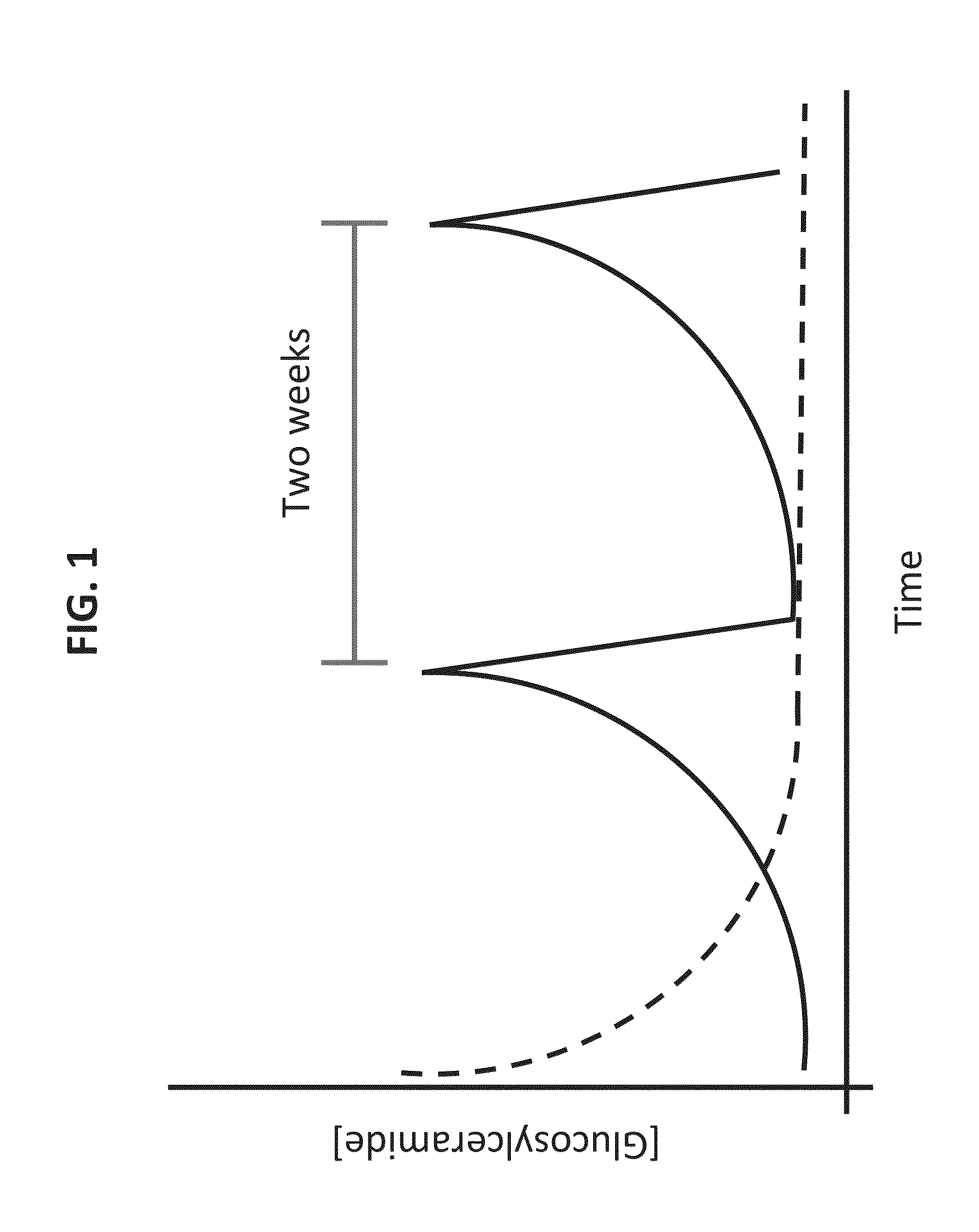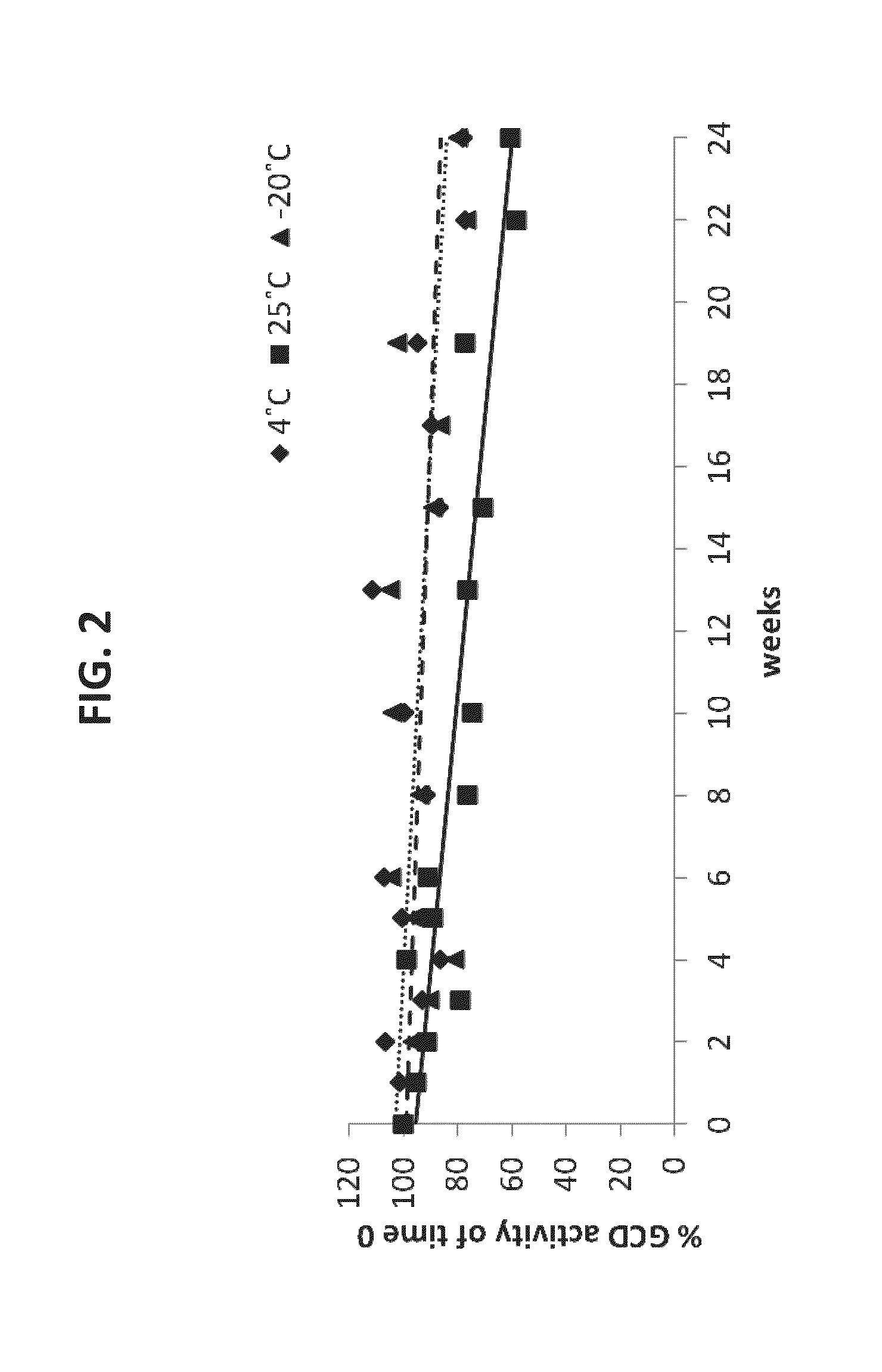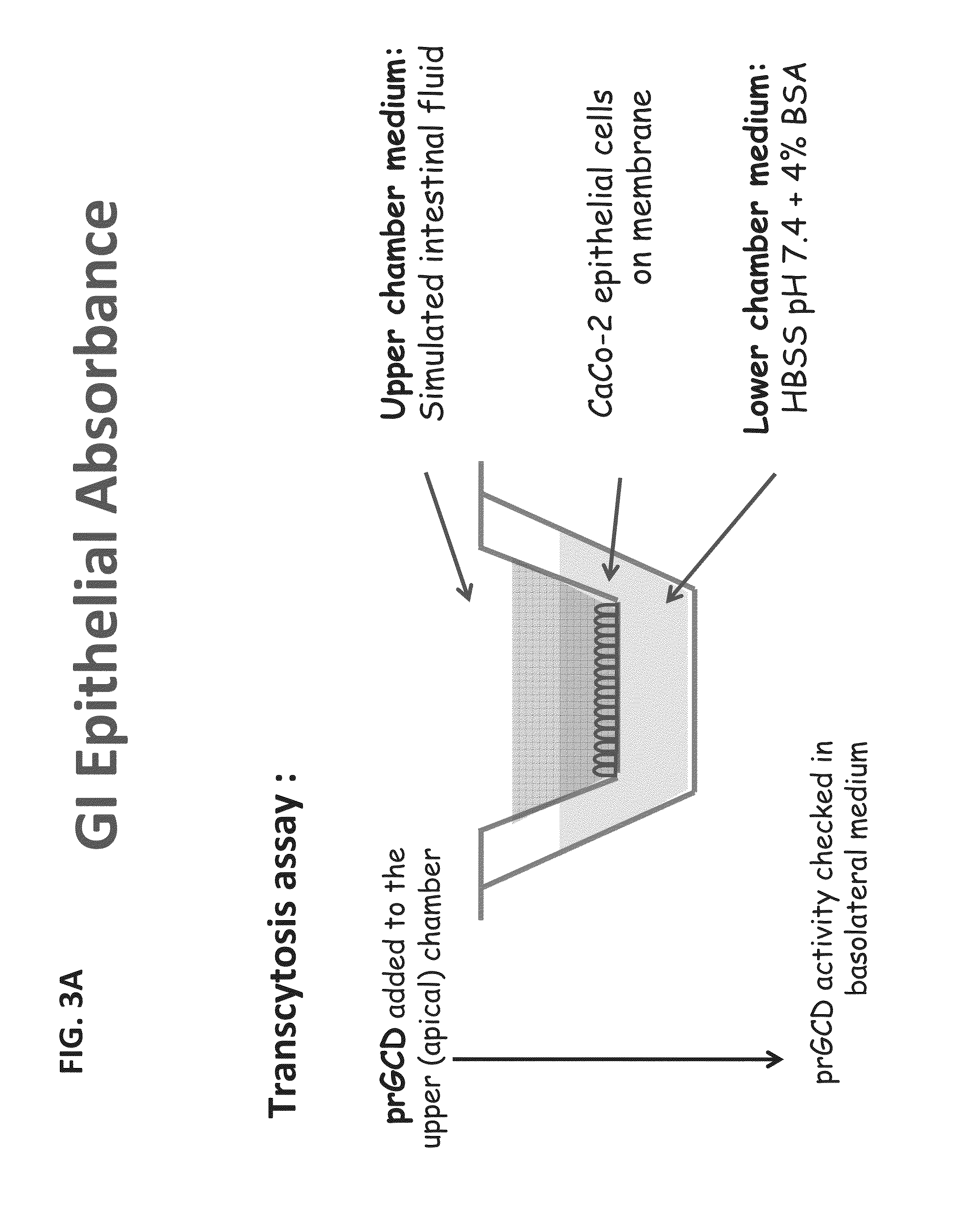Oral unit dosage forms and uses of same for the treatment of gaucher disease
- Summary
- Abstract
- Description
- Claims
- Application Information
AI Technical Summary
Benefits of technology
Problems solved by technology
Method used
Image
Examples
example 1
Plasma Levels of Glucosylceramide Levels Following Enzyme Administration Via Bolus i.v. Injection or Via Daily Oral Administration
[0296]Current treatment of Gaucher disease is based on intravenous (i.v.) bolus injection every two weeks. FIG. 1 shows the theoretical assumption of the effect of such an administration mode on the accumulation of the GCD substrate (glucosylceramide) during two weeks. Following administration the levels of the substrate are brought down to the basic level. Without being bound to theory, oral administration optimally allows a daily treatment that keeps the substrate to its basic level. It is contemplated that less units can achieve a therapeutic effect when given in a daily dose in a manner where the enzyme is released from the cells to the GIT and is then absorbed to the circulation in a continuos manner as opposed to a pulse like administration manner, so all enzyme that reaches target organs will be exposed to its substrate
example 2
Lyophilized Plant Cells Maintain Substantial Activity of Plant Recombinant GCD (prGCD) Expressed Therein Over Months at Room Temperature
[0297]Expression of prGCD in carrot cells is described in details in WO2008 / 132743 which is hereby incorporated by reference in its entirety.
[0298]The cells were lyophilized by freezing to −40° C. Vacuum was applied to a pressure of 0.1 mbar overnight. The cells were heated to −10° C. for 72 hours and then to 20° C. Upon termination of the lyophilization process, the water content was 6.7%. The cells were then weighed into small aliquots that were kept under a humidity control for 24 weeks at room temperature, 4° C. or 25° C. At each time point, the cells were removed from the desiccators, reconstituted with 10×W / V extraction buffer (0.125% sodium taurocholate; 60 mM phosphate citrate buffer pH 6.0; 0.15% Triton-X100; pH 5.5) and the proteins were extracted using a TissueLyser (Retsch MM400; Haan, Germany). The extracts were then tested for GCD acti...
example 3
prGCD can Cross the Epithelial Barrier in an In-Vitro Model
[0301]The ability of prGCD to cross the epithelial barrier was tested in an in-vitro Caco2 model (described in FIG. 3A, for epithelial absorbance). Transcytosis of GCD was performed in triplicate using three independent monolayers as described previously (Tzaban et al., 2009, J Cell Biol. 185(4):673-84). In brief, cells were washed with Hank's buffer salts solution (HBSS) containing 10 mM Hepes, pH 7.4, and then incubated with HBSS simulating the intestinal fluid in a fasted state at pH 6.0, for 10 min. prGCD was added at the apical chamber for a continuous uptake at 37° C. The medium in the basolateral chamber was collected after the indicated time points and prGCD activity was tested as described above using the calorimetric method. Apparent permeability coefficient (Papp) calculation formula is provided below:
PappQt*1ACOrPapp=(slopeofactivityinitialconcentration / time(sec))*basolateralvolume(ml)insertarea(cm2)=1sec*cm3cm2=...
PUM
| Property | Measurement | Unit |
|---|---|---|
| Structure | aaaaa | aaaaa |
| Bioavailability | aaaaa | aaaaa |
Abstract
Description
Claims
Application Information
 Login to View More
Login to View More - R&D
- Intellectual Property
- Life Sciences
- Materials
- Tech Scout
- Unparalleled Data Quality
- Higher Quality Content
- 60% Fewer Hallucinations
Browse by: Latest US Patents, China's latest patents, Technical Efficacy Thesaurus, Application Domain, Technology Topic, Popular Technical Reports.
© 2025 PatSnap. All rights reserved.Legal|Privacy policy|Modern Slavery Act Transparency Statement|Sitemap|About US| Contact US: help@patsnap.com



